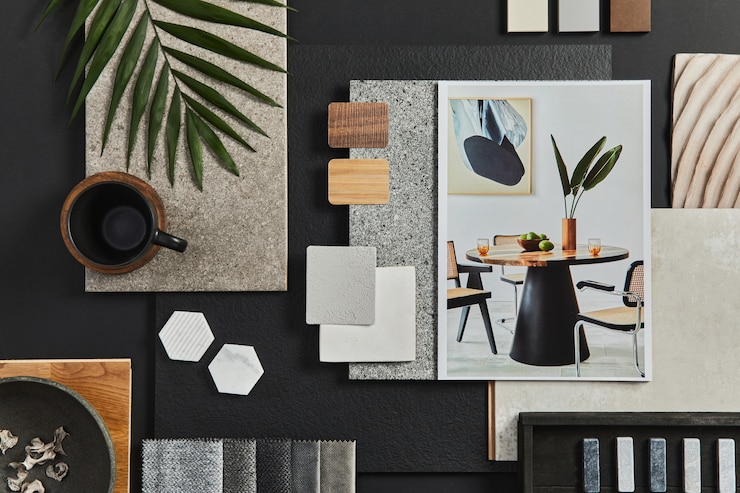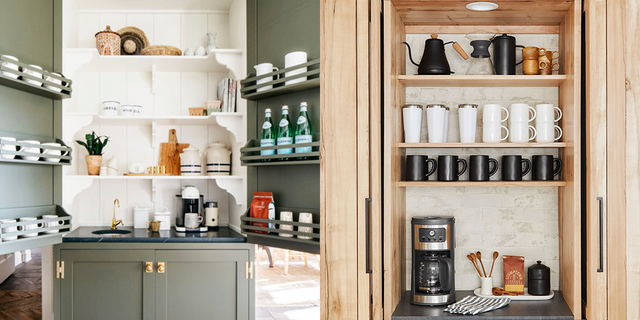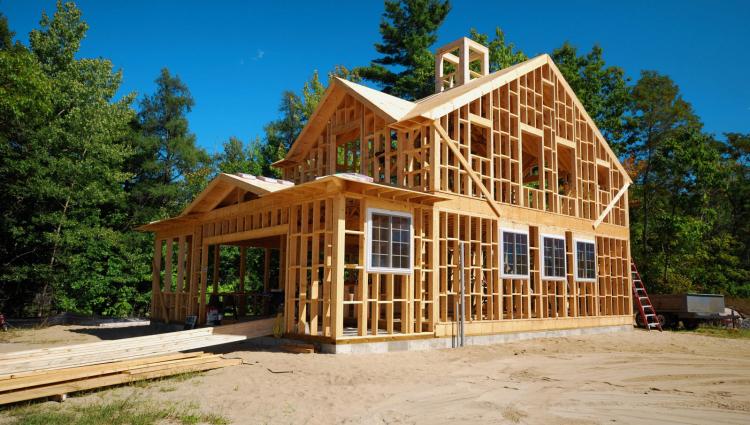Doctors, nurses, and caregivers are working to procure and ration personal protection equipment (PPE) for those providing medical care during the COVID-19 pandemic—but these essential items are in short supply.
In response, large companies, small businesses, community collectives, and individuals are using 3D printers to create plastic face shields that can be worn in combination with N95 masks. These splash guards are designed to protect against the spray of fluids, and when worn in combination with a N95 mask, they can help extend the life of the mask and provide the Center for Disease Control (CDC)-recommended level of protection during a pandemic.
Will Holman, executive director of Open Works in Baltimore, Maryland, wears a 3D-printed face shield produced by Makers Unite.
In New York, Maryland, and beyond, healthcare workers are rationing PPE supplies and layering face shields over N95 masks that are being worn for multiple days. “We’re being asked to ration our N95 masks,” says an ER physician at Johns Hopkins Bayview Medical Center in Baltimore (who asked to remain anonymous). “People are wearing them for three to five shifts in a row,” she says. “If there’s anything I’m willing to wear that’s homemade, it’s a face shield—because it’s a simple plastic design that protects your mask. But our government needs to step it up and get us official PPE. Between 10 and 20 percent of the COVID-19-positive patients are healthcare workers, and that’s terrifying.”
A physician at Mount Sinai Hospital in New York (who also asked to remain anonymous) reports a similar experience. “We’ve more beds than any other hospital in New York, and we are burning through PPE at such a high rate that we’re not confident we’ll have enough,” he says. “While we’ve major shortages, the biggest issue is the N95 mask. The normal recommended usage is one time. It’s not ideal, but we’ve figured out ways to clean and reuse them. Right now, anything that can keep an N95 mask and your face clean is a good thing. So a face shield is a good thing.”
Typically, face shields used for infection control in the U.S. are designed, tested, and manufactured in accordance with the American National Standards Institute (ANSI)/International Safety Equipment Association (ISEA). According to the CDC, they should include a polycarbonate visor or shield that has chin and crown protection and curves around the face, reaching to the ear or beyond to prevent splashes from reaching the eyes, nose, or mouth.
In noting the face shield is a simple design that offers added protection, makers around the world have created open-source designs that anyone with a 3D printer can download and produce. Josef Prusa at Prusa Lab in Prague, Czech Republic, devised an open-source design that was approved by the Czech Republic’s Minister of Health and has been downloaded more than 40,000 times.
In an effort to help contain COVID-19, Josef Prusa, of Prusa Research, a 3D printing company in Prague, Czech Republic, created an open-source design for a face shield to be worn by healthcare workers.
Erik Cederberg at 3DVerkstan, a 3D printing company in Sweden, created an open-source file that’s being used by architecture firms to print additional masks. The effort, which includes Howeler + Yoon, Handel Architects, Bjarke Ingels Group (BIG), Grimshaw, Terreform One, Kohn Pedersen Fox, Weiss/Manfredi and Brooks + Scarpa, is being coordinated by the Architecture, Art and Planning faculty at New York’s Cornell University.
This 3D-printed face shield design was created by Erik Cederberg, of 3DVerkstan in Sweden, to help safeguard healthcare workers battling COVID-19. The design is open source, and it can be downloaded and mass produced.
Isaac Budmen and his partner Stephanie Keefe, of Budmen Industries—an upstate New York company that designs and manufactures 3D printers—finalized their open-source design on March 15, and the file has since been downloaded over 19,000 times. According to a global registry on the company website, they’ve received almost 264,000 requests for face shields from all over the world, including Finland, New Zealand, South America, South Korea, and South Africa, and they have registered 2,182 producers. “We’ve also had requests from all over the U.S., and we have already supplied seven thousand shields to central New York,” says Budmen.
As COVID-19 testing sites began to pop up in New York, Budmen and Keefe were compelled to contribute in some way. “We wanted to help using the resources we have,” Budmen says. “We consulted with a friend who’s a physician and came up with sketches, models, and then our first prototype.” The next day, the couple created six more prototypes and a final 3D-printable design. Budmen and Keefe have since put their regular business on pause, and they are focused on crowdsourcing 3D printing efforts and producing as many face shields as possible.
Isaac Budmen and Stephanie Keefe, of Budmen Industries in New York, developed an open-source face shield design that can be downloaded and 3D printed for healthcare workers treating the COVID-19 virus.
COVID-19 made its way to Maryland, and members of Open Works, a nonprofit makerspace in Baltimore, accessed Prusa’s open-source face shield design and crowdsourced 3D printing efforts. They began printing face shields and then discovered that medical students at Johns Hopkins University were cobbling together face shields for healthcare workers at The Johns Hopkins Hospital and Johns Hopkins Bayview Medical Center using sheets of plastic, staples, and hot glue guns. “I got a message from a nurse at Hopkins who said they were having volunteers make face shields out of office supplies,” says Will Hollman, executive director of Open Works.
As production and demand increased, Hollman reached out to We the Builders, another Baltimore makerspace that uses 3D printers, and Innovation Works, a company that helps build sustainable neighborhood economies in Baltimore. “We the Builders created a registration platform and they are tracking printed parts,” Hollman says. “Innovation Works is interfacing with healthcare providers and handling orders and distribution. We at Open Works are collecting finished parts that we’re assembling, sanitizing, and packaging for distribution.”
A maker from Open Works in Baltimore, Maryland, holds stacks of 3D-printed face shields that will serve as Personal Protection Equipment (PPE) for healthcare workers on the frontlines of the COVID-19 pandemic.
Students from around Baltimore with 3D printers have joined the collective they now call Maker’s Unite. Even Baltimore’s National Aquarium has jumped in to help. “The aquarium not only has 3D printers, they’ve the ability to make a mold and cast parts from plastic at a higher rate than 3D printing,” Hollman says.
And now, Open Works has created an acrylic version of the face shield that can be laser cut and produced faster, too. “We produced 964 shields in our first four days, using parts printed by 168 volunteers,” Hollman says. “They’ve been distributed to 9 clients, including homeless shelters, a cancer care center, and ER doctors at a major hospital.”
At Open Works in Baltimore, brightly colored headbands are collected and attached to face shields.
3D-printed face shields are stacked in the studio at Open Works in Baltimore, Maryland, before they’re shipped to healthcare facilities.
Larger companies are working quickly to develop additional 3D-printable medical supplies that can help contain COVID-19. According to their website, Hewlett Packard has recently received approval from the U.S. Food and Drug Administration (FDA) for single-part 3D-printed COVID-19 nasopharyngeal test swabs as Class I medical devices. The company is working closely with researchers at Harvard University and Beth Israel Deaconess Medical Center to assist in gathering test data, and it expects to begin mass production soon. HP is also developing and testing a 3D-printable design for an emergency respiration device. And Copper 3D, an antibacterial 3D printing company based in the U.S., is in the process of designing a second version of Nanohack, an open-source 3D-printable N95 mask.
When it comes to 3D printing, the design and production efforts of large companies are imperative—but the work of smaller companies and crowdsourced initiatives can have great impact. “3D printing has gone through these waves of hype, and I think that, at times, people have wondered if it’s really good for anything other than for hobbies or playing around,” says Hollman. “With crowdsourcing, you can overcome the inefficiencies of 3D printing—namely speed. Right now, we’re proving that 3D printing is more than a hobby, and that makerspaces are places of community resilience that can provide disaster relief.”
If you have a 3D printer and would like to produce face shields or face shield parts to help contain COVID-19, visit the sites below.







